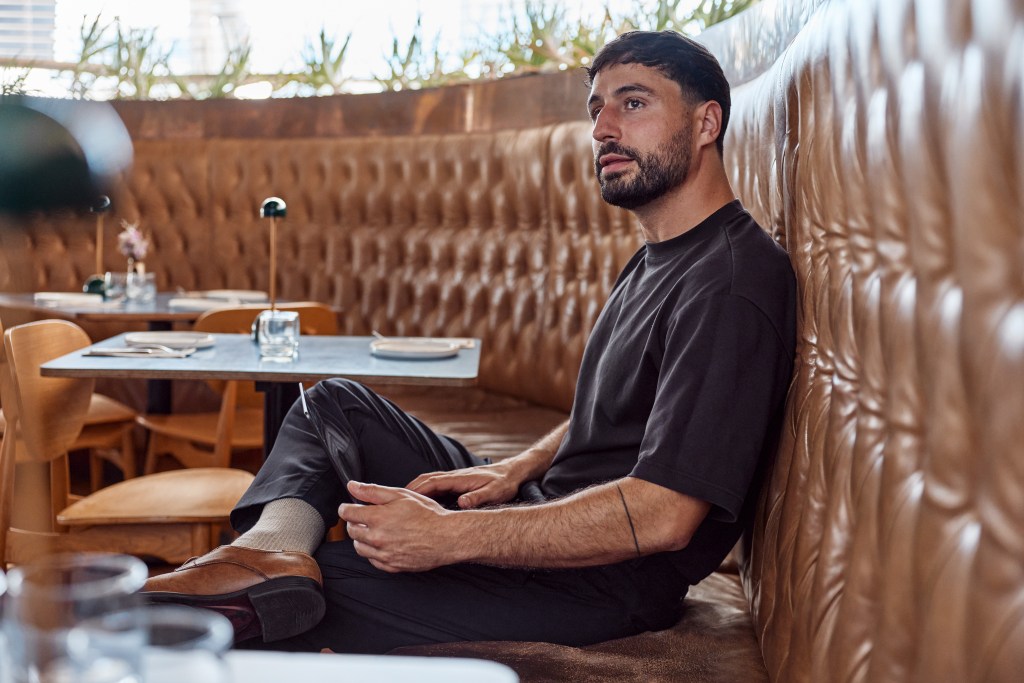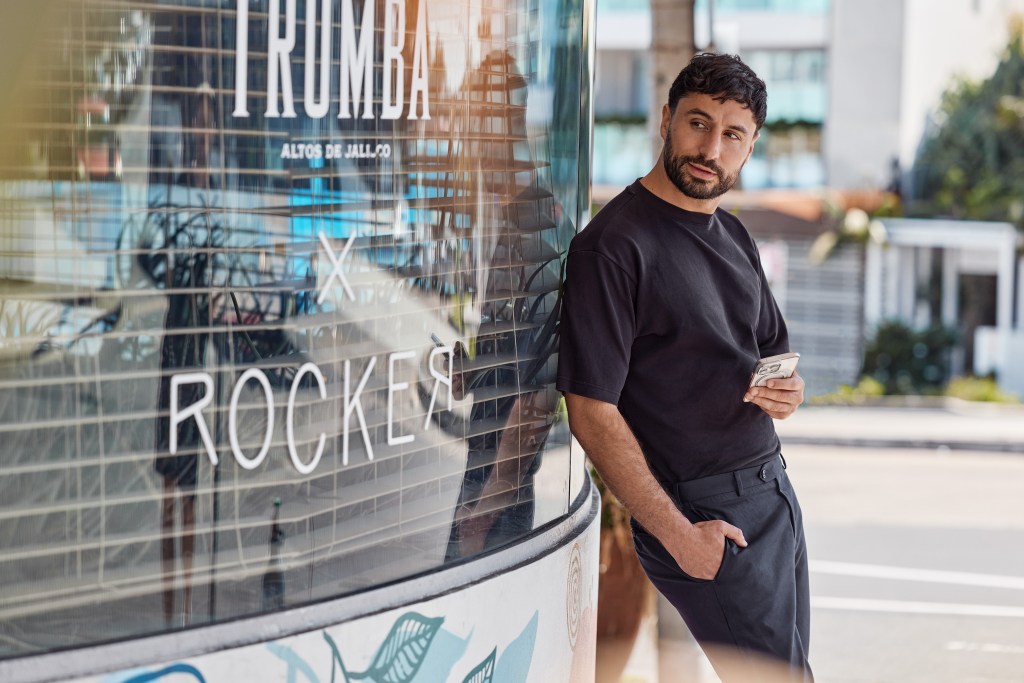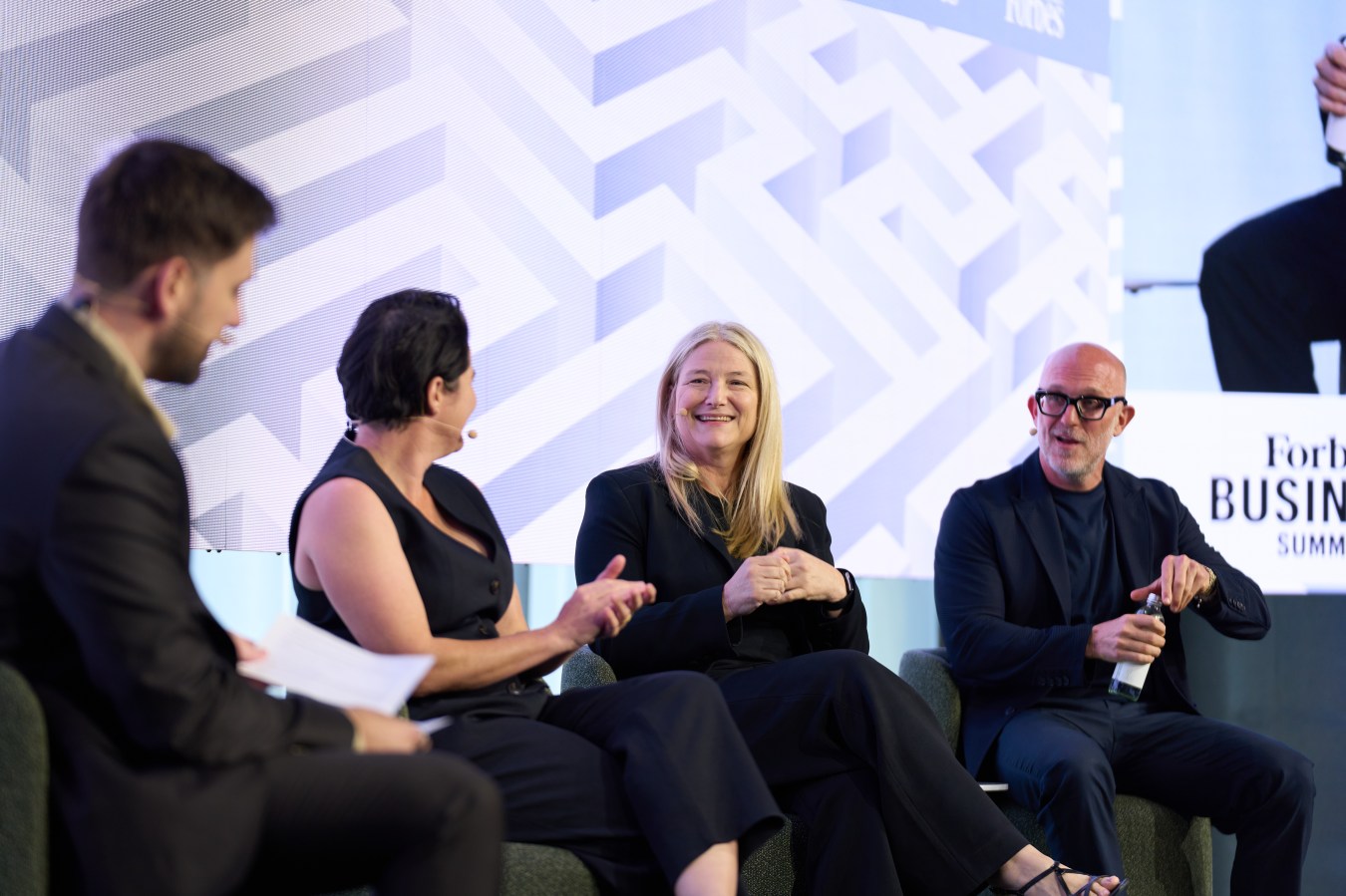After working his way up the ranks of the hospitality industry, from a kitchen-hand to a general manager, then a CEO, Pan Koutlakis has co-founded EatClub, an app that, after its $18.2 million Series A capital raise, hopes to become a global household name in the dining space.
This story appears in Issue 19 of Forbes Australia, out now. Tap here to secure your copy.

Adelaide-born Pan Koutlakis cut his teeth in hospitality for years in gritty back-of-house roles, a background he says gave him an insight into the industry that would drive him to start EatClub, a dining app that this year closed an $18.2 million Series A capital round.
The funding round was led by Co:Act Capital, a Melbourne-based venture capital firm, with participation from family office Gandel Invest, venture capital firm Marbruck and Les Szekely (the first investor in SiteMinder).
Reports now value EatClub at between $75 million and $100 million. After its launch in Australia in 2017, the company has set its sights on expansion throughout the UK, thanks to its fresh capital injection, with a view to becoming a global household name in the dining space.
“That’s the plan,” Koutlakis, co-founder and CEO of EatClub, says.
EatClub started as a dynamic pricing app that connected customers with nearby restaurants and offered discounted meals, allowing customers to make bookings at those restaurants and pay for their meals. It was this concept that pulled celebrity chef, Marco Pierre White, in immediately.
After cold emailing “every famous chef you can think of” in 2016, White responded and came on board with a 5% stake. But for Koutlakis, EatClub’s functions were just old-school ideas powered by new-school tech.
“I started doing a lot of these things in really offline ways back in the day,” says Koutlakis, who was general manager of an Adelaide nightclub before joining last-mile food delivery start-up Suppertime in 2015. (Suppertime was later acquired by Foodora, and Koutlakis was CEO).
“But they made a huge impact on driving customers to our venue, and to make sure we created the right atmosphere at the right time to kickstart a good night out. Lots of little things – I sent out drink cards manually through the post, had people on the street dragging patrons in at the right time. It was all about having everyone drinking and eating at the velocity that you need in the hospitality business to make money.”
Co-founder Ben Tyler comes from banking, which made getting connections to capital early a little easier. And co-founder Matt Cantelo (who also co-founded publicly listed travel firm Corporate Travel Management) had plenty of insight on dynamic pricing – a key player in the travel industry.
“Think about a holiday destination: they will often have peak pricing in summer and off-peak in winter, but hospitality needs dynamic pricing more than the industries you typically associate with it,” Koutlakis says.
“Most venues make 80 to 90% of their revenue across two days, sometimes a day and a half, and there might be a lot of ways you can get product-market fit on the other days of the week, but pricing is an obvious one that works. We’ve found that if you decrease prices by a small amount, you get an outsized impact on the demand for those areas.”
But that’s only half the story: “At one point, the business, at least from a functional perspective, collapsed,” Koutlakis says.
“COVID nearly killed us. Within days, we had a lot of expenses, a lot of staff and our revenue went to virtually zero. It was a super stressful experience – it really could not have been worse for the business.”
Though, it could. EatClub had raised $2.5 million just months before the COVID-19 shutdowns in 2020, and investors expected returns. But thankfully, not just yet. Koutlakis says the company’s backers strongly believed the model worked, and there’d be a world post-COVID-19 where EatClub could thrive.
However, that belief was tested, he adds. “COVID-19 went on for far longer than any of us predicted, but through that time, there was a lot of support, and our investors were super pragmatic about it and just helped us work through what we needed to stay alive and survive.”
The silver lining of it all was that EatClub and its team had time to double down on their vision and build another solution that it claims is a world-first: EatClub Pay. The feature allows customers to order and pay for their dynamically-priced meal without burdening the restaurant with tech upgrades or integrations. The result was a partnership with MasterCard that will enable EatClub to provide customers with whatever pricing they’ve been promised by the restaurant in real-time. And that was the catalyst for the company’s Series A.
“It came down to the EatClub Pay development and the machine learning algorithms we’ve built for restaurants to understand what pricing is going to move the needle to fill the number of tables they need to fill, and how to really optimise their use of Eat Club,” Koutlakis says. “Our customers are stickier than they’ve ever been.”

Expansion throughout London has already begun with an on-the-ground team of sales reps, account managers and marketers. Koutlakis hopes that EatClub can be launched anywhere in the world. With 500 restaurants using the app in inner-city London, he says so far, so good.
“There are little nuances in the market that we’ve had to adapt the product for – the biggest difference being there are far more chains and restaurant groups in London than what we see in Australia. It comes with challenges; some differences in how you run your sales team. Still, there are incredible benefits, particularly the potential for multiple restaurants to sign on at once, and the fact that you can scale much quicker.”
The team is looking at more opportunities across Europe in places like France and Germany, as well as Canada and, of course, the United States. And in terms of product, there’s plenty more to tick off: Koutlakis sees his tech evolving to help restaurants improve their profitability, thanks to the large amount of data EatClub has banked in its e-commerce marketplace.
“Rostering is a big one – not only do you lose a huge amount of money if you don’t have tables filled, but you can also lose that money if you have too many staff on at a particular time. There are two sides to the coin: you need more revenue in the door, but you need to ensure you’re not losing money by having too many variable costs. We’re interested in optimising both sides of that coin.”
Look back on the week that was with hand-picked articles from Australia and around the world. Sign up to the Forbes Australia newsletter here or become a member here.



